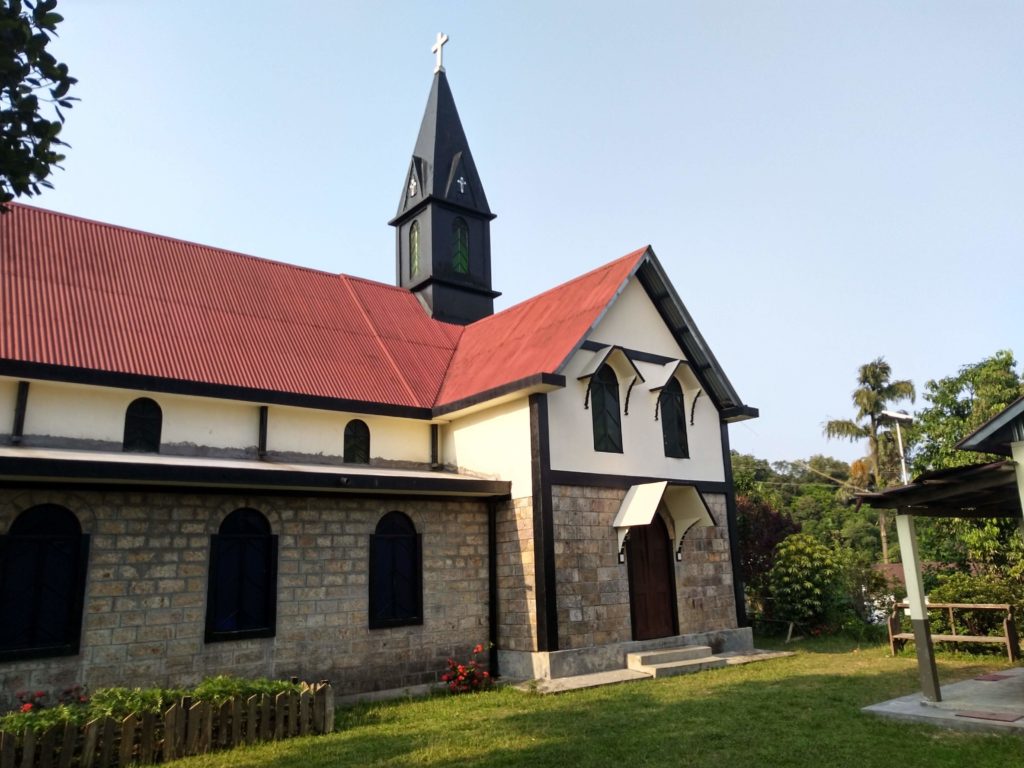
Meghalaya, literally meaning ‘the abode of clouds’, with its lush green hills, is an absolute treat to the eyes of any urban jungle dweller. The state was carved out of Assam in 1972. Meghalaya is constituted of three hills, namely Garo, Khasi, and Jaintia. It is the wettest region in India receiving heavy rainfall throughout the year.
Nestled in the East Khasi Hills about 90 kilometres from the state’s capital Shillong, lies the tiny village of Mawlynnong which came into the limelight when an article in Discover India titled it the cleanest village in India. Subsequently, the village went on to hold the distinction of being Asia’s cleanest village. The tag soon garnered the interest of visitors in experiencing village life. The post-2010 internet and smartphone revolution further consolidated the village’s position on tourist maps with hordes of people visiting the place almost every day.
A newly built narrow road across a toll booth leads to the village and its parking space. The parking area is surrounded by a market on one side selling all sorts of traditional bamboo handicrafts including mini bamboo bins which can be found on every street corner. As one heads towards the interior, one is greeted by the sign ‘Welcome to Mawlynnong, God’s own Garden’. Gardening is an activity that can be traced back to several generations of the residents with all houses maintaining a personal garden. The villagers compost the wet waste to use as manure for their garden as well as for agricultural produce.

The serenity of the village overcomes oneself and evokes a strong desire to permanently settle in these tranquil environs as one walks along the roads of Mawlynnong. It is impossible to not be allured by the quaint cottages and greenery of the village. The experience gets further enriched with the extremely polite and cheerful demeanour of the locals. The majority of Meghalaya consists of Khasi people and Khasi also happens to be the common language for communication. Khasis are a matrilineal tribe where the children take their mother’s name, men live in their mother-in-law’s home and the youngest daughter inherits the wealth.
The Khasis of Mawlynnong are predominantly Christian and the village is served by three churches. Among them, the century-old Church of Epiphany stands tall with its black spire fascinating visitors from a distance. It is said that Welsh missionaries instilled the proverbial term ‘Cleanliness is next to Godliness’ amongst the villagers. The values of cleanliness and sanitation have since been passed from generation to generation with every resident upholding the value to its core. With toilets in every house, Mawlynnong is now considered the paragon of what the country’s Swachh Bharat Abhiyan initiative aims to achieve. To live up to its appellation, the usage of plastic is banned, littering is a punishable offence and streets are cleaned on a daily basis.

Over the past few years, the village has evolved as an eco-tourism spot due to initiatives taken by the residents, who, even though they were hesitant in opening the gates of their village to the outside world, have eventually warmed up to the idea. To ensure that the village doesn’t lose its essence and identity some strict laws were formulated. However, as the village started reaping the benefits of tourism, the elders saw it as a loss to the age-old traditions. The focus shifted from agriculture to tourism as the latter offered better revenue prospects. A majority of households now have a homestay and multiple food joints are currently in operation.
The younger generation plans on opening more homestays as the number of tourists increase day by day. “The parking space has now become double of what it used to be” says one of the drivers who operate a cab service for tourists. This highlights the heavy influx of tourists to the village in the past couple of years.

After a long day of catering to the needs of tourists, the village comes to a standstill as a majority of tourists leave after sunset. It is at this point when one begins to appreciate the village even more as the villagers go on about their routine lives. Be it the occasional twinkling of fireflies in the night or early morning showers that make the greens livelier, one is left to marvel at the ubiquitous beauty of Mawlynnong and all that it has managed to achieve.
Author: Drona Vatsyayan

